#European Colonies
Text
Forget 'Walking The Plank.' Pirate Portrayals—From Blackbeard to Captain Kidd—Are More Fantasy Than Fact.
How we think famous swashbucklers walked, talked, and dressed didn't come from the history books, so where did these pirate myths come from?
— By Jamie L. H. Goodall
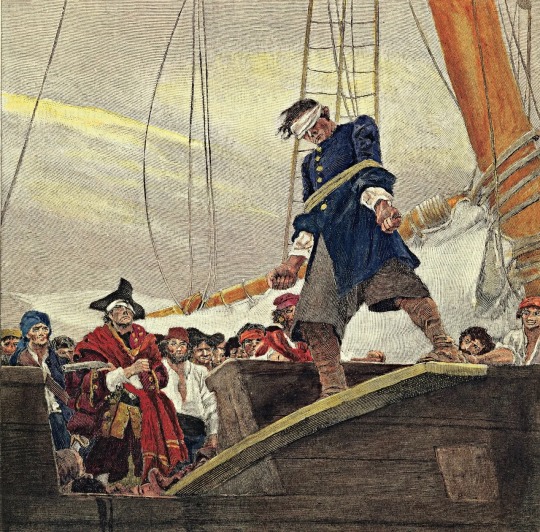
An illustration from 19th-century artist Howard Pyle depicts a man being forced to walk the plank. Although there is no record of this type of punishment, it remains popular in pirate mythology. Photograph By Image Courtesy of Bridgeman Images
Say “pirate,” and people envision grizzled men with eye patches, parrots, and treasure maps. They picture buccaneers forcing their victims to walk the plank, and crying “Shiver me timbers” as they fly the Jolly Roger flag. It turns out, many of these stereotypes are not true. Pirates have been around for nearly as long as people have sailed the world’s waters, and, in fact, still exist. It’s just how they’ve been depicted that’s often misleading. So where did these misinterpretations come from?

A replica pirate ship cruising the Caribbean Sea near the Dominican Republic. Photograph By Thomas Grau, Alamy Stock Photo
Pirate Fashion
Pirates are commonly portrayed wearing colourful attire. He may sport as a loose-fitting shirt with a bandana around his head, a scarf around his waist, ripped pants, wearing tattered boots, like Captain Jack Sparrow from the Pirates of the Caribbean film series. Or he may appear a bit foppish, much like Stede Bonnet, the "gentleman pirate" in the 2022 series Our Flag Means Death.
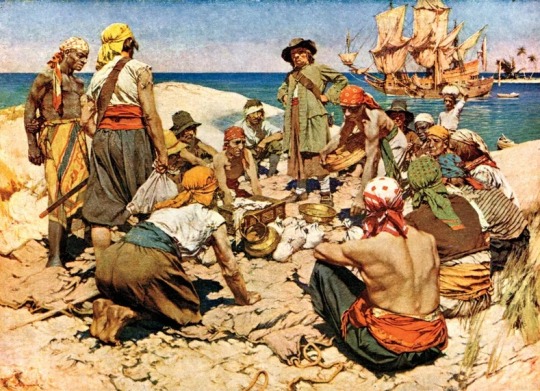
Common pop culture depictions of pirate garb, as shown here in this early 20th century artwork, are often based on fanciful descriptions of their attire and language. Photograph By Image Courtesy of Bridgeman Images
Unfortunately, these looks are just not true. Much of this ostentation came from American artist Howard Pyle, who took his inspiration from Spanish bandits of the late 19th century. Sailors in the 18th century, pirates included, wore things such as loose pants cut off at the knee and thigh-length blouses.
Prosthetic limbs are another common pirate trait. It’s true some pirates had a wooden leg or hook hand, though it probably wasn’t the norm. More often than not, amputations at sea were likely a death sentence. While ships carried medicine chests, and medical care was often meted out by someone on the crew, infection and blood loss could lead to death. Even if a pirate survived an amputation, his ability to fight would be limited. But losing a limb didn’t mean one could not continue on the ship; the person might serve the crew, for instance, as a cook.
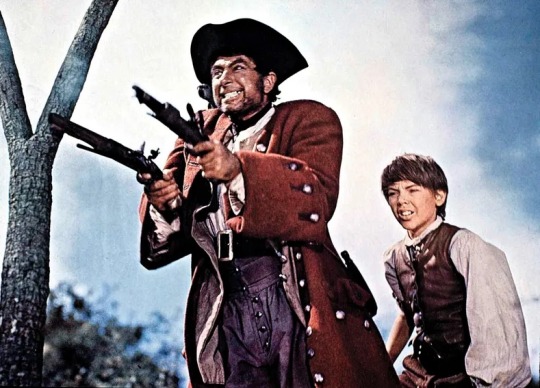
Many pirate clichés stem from the 1950 film 'Treasure Island,' featuring Robert Newton as the fictional pirate Long John Silver. Photograph By United Archives GMBH, Alamy Stock Photo
Pirate Talk
Common pirate phrases—such as Arrrrr me mateys!” and “Shiver me timbers!”—are common in pirate movies and pop culture. But they’re not legitimate things a pirate would actually have said. Robert Louis Stevenson imagined some of them for his 1883 novel Treasure Island, published more than 150 years after the “golden age” of piracy.
The trope of talking like a pirate is mostly a product of 20th-century Hollywood. In particular, British actor Robert Newton, who played both Blackbeard and Long John Silver. His portrayal of the fictional captain in the 1950s rendition of Treasure Island used an exaggeration of his own West Country accent and would define the sound of a pirate's accent. His portrayal also popularised many of the sayings associated with pirates today. In reality, pirates most probably spoke in a manner similar to all sailors of the time.
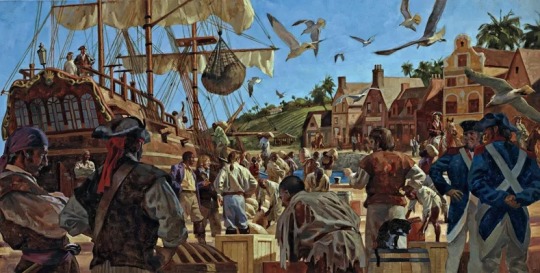
An artist imagines the often-willing markets pirates found throughout the Atlantic world for their stolen loot. Transatlantic trade was critical for the success of European colonies. Photograph By Gregory Manchess
Treasure, Buried or Otherwise
Captain Kidd may have buried his treasure, but that was a rare exception for most pirates. Typically, they spent their ill-gotten gains on women and alcohol at pirate-friendly ports as quickly as they could. Burying treasure would be dangerous due to shifting sands and tides, so one might easily lose their treasure. And there was a distinct lack of trust, not knowing if others might deceptively go back to dig up the treasure on their own.
Also, much of the loot pirates collected was not in the form of silver or gold. Such treasure would have been difficult to come by. The more common "booty" would have been whatever goods or commodities they could get their hands on, including timber, furs, silks, cotton, spices, and medical supplies. They also loaded up on items to perform necessary repairs on their ships, including cable, rigging, and sails.

Top Left: A gold bar and coins recovered from the Spanish galleon 'Las Maravillas' that wrecked in 1656 near the Bahamas. Photograph By Jeff Rotman, Nature Picture Library, Alamy Stock Photo Top Right: Prized Spanish coins, or pieces of eight, recovered from the wreck of the 'Whydah Gally'. Photograph By Zuma Press Inc., Alamy Stock Photo Bottom: Wooden treasure chests were typically studded with metal to reinforce them. Photograph By Andyroland, IStock, Getty Images
Pirate Codes
There is evidence that many pirate crews adopted a code of honour or articles of agreement, mostly to keep order on board the ship. These codes dealt with everything from how to divvy up loot, to what happened to pirates if they became injured in the line of duty, to how bad behaviour would be dealt with, to how prisoners would be treated. Some pirate articles have survived to this day, including the code of Englishman George Lowther and his crew, which, for example, compensated a person who lost a limb during a skirmish.

The 1724 articles of Captain John Phillips of the 'Revenge' discuss matters such as theft on board the ship and compensation for limbs lost during battle. Photograph By British Library Board. All Rights Reserved, Bridgeman Images
If a pirate violated the code, it is unlikely they were made to "walk the plank." Little to no historical evidence exists to support that practice, which was largely pulled from fiction, including Treasure Island. If victims were punished in some way, it was typically via keelhauling. Keelhauling was arguably a more hideous fate that involved an individual being tied to a rope and dragged under the ship. Victims of keelhauling either died by bleeding out from injuries inflicted by barnacles on the hull of the ship or by drowning. Other forms of punishment ranged from being thrown overboard to being lashed to being marooned on a desert isle.
Pirate Ships 🛳️ 🚢
Most pirates did not sail Spanish galleons, or even the frigates such as Captain Jack Sparrow’s Black Pearl. They favoured small, more manoeuvrable vessels, which allowed easy escape from larger warships that chased them. During the 16th and 17th centuries, sloops were the most common choice for pirates. They were quick and had a shallow draft, making easier escape into shallow waters. Schooners were another favourite of pirates. Similar to sloops, schooners were fast, simple to manoeuvre, and could easily hide in estuaries because of their shallow draft.

Top: A replica of the 17th-century Spanish galleon 'Neptune'. Photograph By Volodymyr Dvornyk, Shutterstock Middle: A crew raises the anchor from what is believed to be the remains of the pirate Blackbeard’s flagship, 'Queen Anne’s Revenge.' It was discovered in Beaufort Inlet, in Carteret County, North Carolina. Photograph By AP Photo, Robert Willett, The News & Observer
Bottom Left: The National Museum of the Royal Navy in Hampshire, England, displays a Jolly Roger that once belonged to Admiral Richard Curry, who seized it from pirates off the North African coast in 1790. Photograph By Andrew Matthews, Getty Images Bottom Right: Coves, such as this one near Bridgetown, Barbados, would have made perfect hideouts for pirates. Photograph By Fabio Mauri, Eyeem, Getty Images
And, despite popular myth, most pirates did not fly the famous Jolly Roger—a skull and crossbones symbol on a black flag. Some flew a black flag, which meant the pirate was willing to give quarter, while a red flag meant blood and certain death. Blackbeard’s flag showed a skeleton holding a spear pointing at a bleeding heart. Pirate crews also often held the flags of several different nations so they could raise a particular flag to signal being “friendly” to a passing ship, only to raise their pirate flag once they were in close enough range to attack said vessel.
Pirate Fights
One thing that most of the pop culture depictions of pirates got somewhat right is that they liked versatile weapons. Cutlasses, short swords with a slightly curved blade, could be used to effectively fight in the confined areas of a ship and could also be used to butcher meat.

Top: Bar shot were common tools for pirates, who used them at close range to destroy the rigging and sails of enemy ships. Due to the weights on either end of the bars, they would spin uncontrollably after being fired from a cannon. Bottom: This musket’s barrel and stock were cut down, likely so a pirate could more easily use it in close combat. Photographs By Kenneth Garrett
Pirates also enjoyed using a gun known as a blunderbuss. It had a distinct flared muzzle that sprayed small lead balls at intended victims. Cannons were also common onboard pirate ships. They could be loaded with chain shot (two cannonballs chained together), grapeshot (small cannonballs), or basic cannonballs. Their targets often didn’t stand a chance.
While books, movies, and popular culture may have taken liberty with descriptions of pirates through the ages, these pillagers have terrorised the seas for more than 2,000 years in one form or another, plundering victims and striking fear into their hearts. The most recent pirates work off the coasts of Somalia and Malaysia, looking far different from the “golden age” of piracy depictions. But one thing remains true: They are just as intimidating.

The 18th-century painting 'Anne Bonny, Female Pirate' by Fortunino Matania depicts Anne Bonny and an accomplice taking two sailors prisoner. Photograph By Image Courtesy of Historia, Shutterstock
#Culture | History#Pirate Portrayals#Blackbeard | Captain Kidd#Fantasy | Fact#Pirate Mythology#Pirate Ship 🛳️ 🚢#Pirate Garb#Fanciful | Descriptions#Attire Language#Treasure Island#Transatlantic Trade#European Colonies#Bahamas 🇧🇸
9 notes
·
View notes
Text




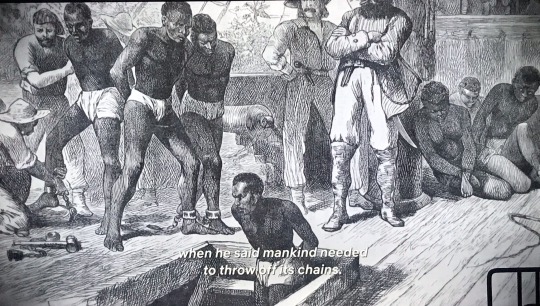



“After arriving in America to forge a life of honest, hard work and toil, many of these colonists realized they couldn’t be arsed, so they stole people from Africa and made them do it instead. You might think these were precisely the people Rousseau had been talking about when he said mankind needed to throw off their chains. But they weren’t. Like many humanists, he’d found a clever loophole. By not thinking of slaves as human, he was free to not give a shit.” - Philomena Cunk, “Cunk on Earth”
#philomena cunk#cunk on earth#jean jacques rousseau#slavery#colonialism#American history#european history#us history
4K notes
·
View notes
Text
Mom? Can you pick me up? People on Twitter are doing noble savage "European colonialism is worse than Islamic colonialism" arguments again.
#Personal#history#Just because the linguistic and cultural impacts of European colonialism were more enduring doesn't mean Islamic colonialism wasn't just as#violent and terrible
570 notes
·
View notes
Text
colonization wasn't started by the europeans in the 1500s.
so stop trying to demonize Europe and America for what they have don't that MANY cultures around the world have already done.
and yes using the term "colonizer" is a racial slur and stop suing it.
#colonization#colonialsm#colonies#european history#englands#uk#america#france#dutch#enlglish#white people#colonizer#racial slurs#rome#greece#asia
348 notes
·
View notes
Text
the more I read about contemporary homophobic laws globally the more it becomes apparent that there is basically a 1:1 direct relationship between whether a country was under historic British rule and how many anti-sodomy laws they currently have on the books. like I knew this in a general sense but not the staggering degree to which this was the case. and I know this probably isn’t really shocking especially given how insanely anti-trans the UK is right now but it’s kind of insane to see just how much homophobia is a comprehensively global export of the British
#also not suggesting that it’s a colonial INVENTION like it’s not that the world was a pro-gay utopia pre-European colonisation#but reading a lot of post-colonial scholarship it’s kind of mind-boggling#also a deeply privileged thing to admit I know. my surprise is mostly the degree to which ‘global homophobia is a colonial artefact’#is like not an exaggerated claim at all basically#One thing that’s frustrating is that a lot of the scholarship I’ve read so far focuses on heterosexuality as the root cause#& not gender. like truly I do not think homophobia as colonial policy makes any sense without gender as the primary distribution mechanism#but anyway. much more reading to do !
146 notes
·
View notes
Text
Am I the only one here who is so damn angry about the fact that a large portion of the Slavic representation on the Western media is either Russian, Russian-coded (e.g. the Grisha Universe by Leigh Bardugo) or copies the narratives about other Slavic nations that exist in the Russian discourse about them?
#russian colonialism#russian imperialism#russia#ukraine#slavic nations#Slavic people#eastern european#anti eastern european sentiments#slavic representation on the western media#western media#Russia centrism#poland#czech republic#slovakia#Belarus#croatia#bosnia#bosnia and herzegovina#serbia#Macedonia#Bulgaria#slavic countries#pop culture#eastern europeans of tumblr
2K notes
·
View notes
Text
Endangered Indian sandalwood. British war to control the forests. Tallying every single tree in the kingdom. European companies claim the ecosystem. Spices and fragrances. Failure of the plantation. Until the twentieth century, the Empire couldn't figure out how to cultivate sandalwood because they didn't understand that the plant is actually a partial root parasite. French perfumes and the creation of "the Sandalwood City".
---
Selling at about $147,000 per metric ton, the aromatic heartwood of Indian sandalwood (S. album) is arguably [among] the most expensive wood in the world. Globally, 90 per cent of the world’s S. album comes from India [...]. And within India, around 70 per cent of S. album comes from the state of Karnataka [...] [and] the erstwhile Kingdom of Mysore. [...] [T]he species came to the brink of extinction. [...] [O]verexploitation led to the sandal tree's critical endangerment in 1974. [...]
---
Francis Buchanan’s 1807 A Journey from Madras through the Countries of Mysore, Canara and Malabar is one of the few European sources to offer insight into pre-colonial forest utilisation in the region. [...] Buchanan records [...] [the] tradition of only harvesting sandalwood once every dozen years may have been an effective local pre-colonial conservation measure. [...] Starting in 1786, Tipu Sultan [ruler of Mysore] stopped trading pepper, sandalwood and cardamom with the British. As a result, trade prospects for the company [East India Company] were looking so bleak that by November 1788, Lord Cornwallis suggested abandoning Tellicherry on the Malabar Coast and reducing Bombay’s status from a presidency to a factory. [...] One way to understand these wars is [...] [that] [t]hey were about economic conquest as much as any other kind of expansion, and sandalwood was one of Mysore’s most prized commodities. In 1799, at the Battle of Srirangapatna, Tipu Sultan was defeated. The kingdom of Mysore became a princely state within British India [...]. [T]he East India Company also immediately started paying the [new rulers] for the right to trade sandalwood.
British control over South Asia’s natural resources was reaching its peak and a sophisticated new imperial forest administration was being developed that sought to solidify state control of the sandalwood trade. In 1864, the extraction and disposal of sandalwood came under the jurisdiction of the Forest Department. [...] Colonial anxiety to maximise profits from sandalwood meant that a government agency was established specifically to oversee the sandalwood trade [...] and so began the government sandalwood depot or koti system. [...]
From the 1860s the [British] government briefly experimented with a survey tallying every sandal tree standing in Mysore [...].
Instead, an intricate system of classification was developed in an effort to maximise profits. By 1898, an 18-tiered sandalwood classification system was instituted, up from a 10-tier system a decade earlier; it seems this led to much confusion and was eventually reduced back to 12 tiers [...].
---
Meanwhile, private European companies also made significant inroads into Mysore territory at this time. By convincing the government to classify forests as ‘wastelands’, and arguing that Europeans would improves these tracts from their ‘semi-savage state’, starting in the 1860s vast areas were taken from local inhabitants and converted into private plantations for the ‘production of cardamom, pepper, coffee and sandalwood’.
---
Yet attempts to cultivate sandalwood on both forest department and privately owned plantations proved to be a dismal failure. There were [...] major problems facing sandalwood supply in the period before the twentieth century besides overexploitation and European monopoly. [...] Before the first quarter of the twentieth century European foresters simply could not figure out how to grow sandalwood trees effectively.
The main reason for this is that sandal is what is now known as a semi-parasite or root parasite; besides a main taproot that absorbs nutrients from the earth, the sandal tree grows parasitical roots (or haustoria) that derive sustenance from neighbouring brush and trees. [...] Dietrich Brandis, the man often regaled as the father of Indian forestry, reported being unaware of the [sole significant English-language scientific paper on sandalwood root parasitism] when he worked at Kew Gardens in London on South Asian ‘forest flora’ in 1872–73. Thus it was not until 1902 that the issue started to receive attention in the scientific community, when C.A. Barber, a government botanist in Madras [...] himself pointed out, 'no one seems to be at all sure whether the sandalwood is or is not a true parasite'.
Well into the early decades of twentieth century, silviculture of sandal proved a complete failure. The problem was the typical monoculture approach of tree farming in which all other species were removed and so the tree could not survive. [...]
The long wait time until maturity of the tree must also be considered. Only sandal heartwood and roots develop fragrance, and trees only begin developing fragrance in significant quantities after about thirty years. Not only did traders, who were typically just sailing through, not have the botanical know-how to replant the tree, but they almost certainly would not be there to see a return on their investments if they did. [...]
---
The main problem facing the sustainable harvest and continued survival of sandalwood in India [...] came from the advent of the sandalwood oil industry at the beginning of the twentieth century. During World War I, vast amounts of sandal were stockpiled in Mysore because perfumeries in France had stopped production and it had become illegal to export to German perfumeries. In 1915, a Government Sandalwood Oil Factory was built in Mysore. In 1917, it began distilling. [...] [S]andalwood production now ramped up immensely. It was at this time that Mysore came to be known as ‘the Sandalwood City’.
---
Text above by: Ezra Rashkow. "Perfumed the axe that laid it low: The endangerment of sandalwood in southern India." Indian Economic and Social History Review 51, no. 1, pages 41-70. March 2014. [Bold emphasis and some paragraph breaks/contractions added by me. Italicized first paragraph/heading in this post added by me. Presented here for commentary, teaching, criticism purposes.]
#a lot more in full article specifically about#postindependence indian nationstates industrial extraction continues trend established by british imperial forestry management#and ALSO good stuff looking at infamous local extinctions of other endemic species of sandalwood in south pacific#that compares and contrasts why sandalwood survived in india while going extinct in south pacific almost immediately after european conques#abolition#ecology#imperial#colonial
212 notes
·
View notes
Text
European history is not white


Someone commented this to a post I reblogged, which message is basically "we shouldn't venerate the Dead White Man HistoryTM and we should elevate other history too, but we still need to learn Dead White Man HistoryTM to understand the world today". It's basically a response to the attitude you sometimes come across in the internet that sees learning about those Dead White MenTM as not worth our time. And this person, who seems to be following this blog because they responded to my reblog, takes it as a personal attack against all white Europeans. For some reason. Well I take these comments as a personal attack against historical understanding.
Firstly, the post clearly didn't say you shouldn't venerate any European history, because not all European history is Dead White Man HistoryTM. Obviously this person thinks European history is white, which is not true, but surely, surely, they know it's not all men? Secondly, what is "west culture"? When did it start? There is not one western culture, not one European culture. The first concept of some shared Europeanness was the Christendom in Middle Ages, but it was not exactly the same as we think of Europe today, because it did not include the pagan areas, but it included a lot of Levant and parts of Central Asia, where there were large Christian areas. And Europe was not "very white" nor was the Christendom. The more modern concept of West was cooked in tandem with race and whiteness during colonial era and Enlightenment, around 17th to 18th centuries. And Europe was certainly not very white then. The western world also includes a lot of colonized areas, so that's obviously not white history. Thirdly, implying that asking white people to apologize for European history (which no one did ask) is as ridiculous as asking black people for African history is... a choice. Black people do exist in a lot of other places than Africa, which white people should be the ones apologizing for, and really white people also have a lot to answer for about African history. Lastly, if you think the quote "anyone who thinks those dead white guys are aspirational is a white supremacist" means you as an European are demanded to apologize for your existence, maybe - as we say in Finland - that dog yelps, which the stick clanks. (I'm sorry I think I'm the funniest person in the world when I poorly translate Finnish sayings into English.)
The thing is, there is no point in European history, when Europe was white, for three reasons. 1) Whiteness was invented in 17th century and is an arbitrary concept that has changed it's meaning through time. 2) Whichever standard you use, historical or current, Europe still has never been all or overwhelmingly white, because whiteness is defined as the in-group of colonialists, and there has always been the internal Other too. In fact the racial hierarchy requires an internal Other. 3) People have always moved around a lot. The Eurasian steppe and the Mediterranean Sea have always been very important routes of migration and trade. I've been meaning to make a post proving exactly that to people like this, since as I've gathered my collection of primary images of clothing, I've also gathered quite a lot of European primary images showing non-white people, so I will use this opportunity to write that post.
So let's start from the beginning. Were the original inhabitants of Europe white? Of course not. The original humans had dark skin so obviously first Europeans had dark skin. Whenever new DNA evidence of dark skinned early Europeans come out (like this study), the inevitable right-wing backlash that follows is so interesting to me. Like what did you think? Do you still believe the racist 17th century theories that white people and people of colour are literally different species? I'm sure these people will implode when they learn that studies (e.g. this) suggest in fact only 10 000 years ago Europeans had dark skin, and even just 5 000 years ago, when Egypt (an many others) was already doing it's civilization thing, Europeans had brown skin (another source). According to the widely accepted theory, around that time 5 000 years ago the Proto-Indo-European language developed in the Pontic-Caspian steppe, which extends from Eastern Europe to Central Asia. These Proto-Indo-Europeans first migrated to Anatolia and then to Europe and Asia. Were they white? Well, they were probably not light skinned (probably had brown skin like the other people living in Europe around that time), the Asian branch of Indo-European peoples (Persians, most Afghans, Bengalis, most Indians, etc.) are certainly not considered white today and a lot of the people today living in that area are Turkic and Mongolic people, who are also not considered white. I think this highlights how nonsensical the concept of race is, but I don't think Proto-Indo-Europeans would have been considered white with any standard.
Around Bronze Age light skin became common among the people in Europe, while in East Asia it had become wide spread earlier. This does not however mark the point when "Europe became white". During the Bronze Age there was a lot of migration back and forth in the Eurasian steppe, and the early civilizations around Mediterranean did a lot of trade between Europe, Africa and Asia, which always means also people settling in different places to establish trading posts and intermarrying. There were several imperial powers that also stretched to multiple continents, like the briefly lived Macedonian Empire that stretched from Greece to Himalayas and Phoenicians from Levant, who didn't built an empire but settled in North Africa, Sicily and Iberia. In Iron Age the Carthaginian Empire, descendants of Phoenician settlers in current Tunisia, build an Empire that spanned most of the western Mediterranean coast. Their army occupying that area included among others Italic people, Gauls, Britons, Greeks and Amazigh people.
Iron Age also of course saw the rise of the Roman Republic, and later empire, but it was preceded by Etruscans, who populated Tuscan, and possibly preceded the Indo-European presence. However, weather through trade and migration with other Mediterraneans or the continuing presence of darker skin tones of the early Europeans, their art quite often depicts darker skin tones too, like seen below in first two images. Roman Empire at it's height spanned from Babylonia to the British Isles. They recruited soldiers from all provinces and intentionally used stationed them in different areas so they wouldn't be too sympathetic to possible rebels or neighboring enemies. Historical sources mention black Nubian soldiers in British Isles for example. They also built a lot of infrastructure around the empire to ensure protection and easy transportation through trade routes inside the empire. During this time Jewish groups also migrated from Levant to both North-Africa and Europe. Rome even had non-European emperors, like Septimius Severus who originated from Levant and was Punic (descendants of Phoenicians) from his father's side, and who was depicted with darker skin (third picture below). Various ethnicities with differing skin tones are represented all over Roman art, like in the fourth picture below from hunting lodge in Sicily.

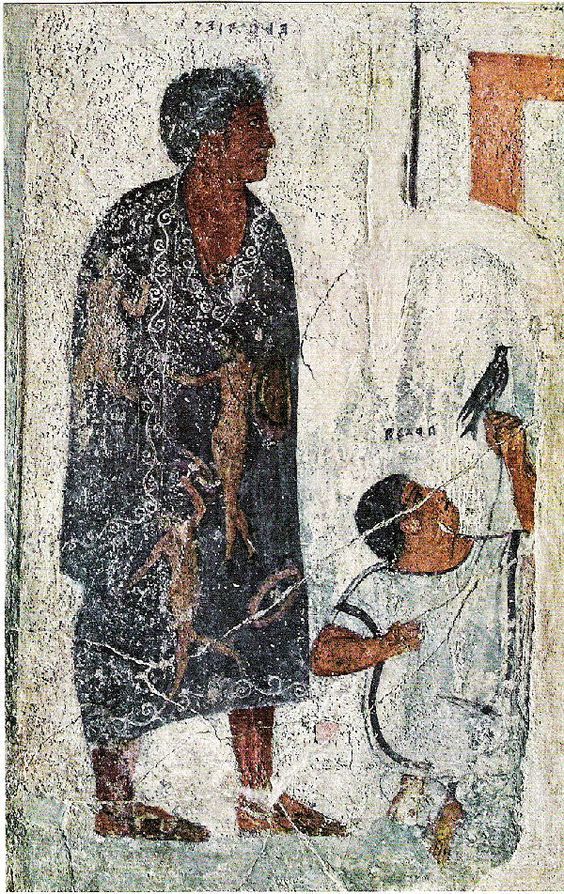


Eurasian steppe continued to be important source of migration and trade between Europe and Asia. Scythians, Iranic nomadic people, were important for facilitating the trade between East Asia and Europe through the silk road during the Iron Age. They controlled large parts of Eastern Europe ruling over Slavic people and later assimilating to the various Slavic groups after loosing their political standing. Other Iranic steppe nomads, connected to Scythian culture also populated the Eurasian steppe during and after Scythia. During the Migration Period, which happened around and after the time of Western Rome, even more different groups migrated to Europe through the steppe. Huns arrived from east to the Volga region by mid-4th century, and they likely came from the eastern parts of the steppe from Mongolian area. Their origins are unclear and they were either Mongolic, Turkic or Iranic origin, possibly some mix of them. Primary descriptions of them suggests facial features common in East Asia. They were possibly the nomadic steppe people known as Xiongnu in China, which was significant in East and Central Asia from 3rd century BCE to 2nd century CE until they moved towards west. Between 4th and 6th centuries they dominated Eastern and Central Europe and raided Roman Empire contributing to the fall of Western Rome.
After disintegration of the Hun Empire, the Huns assimilated likely to the Turkic arrivals of the second wave of the Migration Period. Turkic people originate likely in southern Siberia and in later Migration period they controlled much of the Eurasian steppe and migrated to Eastern Europe too. A Turkic Avar Khagenate (nation led by a khan) controlled much of Eastern Europe from 6th to 8th century until they were assimilated to the conquering Franks and Bulgars (another Turkic people). The Bulgars established the Bulgarian Empire, which lasted from 7th to 11th in the Balkans. The Bulgars eventually adopted the language and culture of the local Southern Slavic people. The second wave of Migration Period also saw the Moor conquest of Iberia and Sicily. Moors were not a single ethnic group but Arab and various Amazigh Muslims. Their presence in the Iberian peninsula lasted from 8th to 15th century and they controlled Sicily from 9th to 11th century until the Norman conquest. During the Norman rule though, the various religious and ethnic groups (which also included Greeks and Italic people) continued to live in relative harmony and the North-African Muslim presence continued till 13th century. Let's be clear that the Northern Europe was also not white. Vikings also got their hands into the second wave migration action and traveled widely to east and west. Viking crews were not exclusively Scandinavians, but recruited along their travels various other people, as DNA evidence proves. They also traded with Byzantium (when they weren't raiding it) and Turkic people, intermarried and bought slaves, some of which were not white or European. A Muslim traveler even wrote one of the most important accounts of Vikings when encountering them in Volga.
By this point it should already be clear that Medieval Europe was neither white, but there's more. Romani people, who originate from India and speak Indo-Aryan language, arrived around 12th century to Balkans. They continued to migrate through Europe, by 14th century they were in Italy, by 15th century in Germany and by 16h century in Britain and Sweden. Another wave of Romani migration from Persia through North-Africa, arrived in Europe around 15th century. Then there's the Mongol Empire. In 13th century they ruled very briefly a massive portion of the whole Eurasian continent, including the Eastern Europe. After reaching it's largest extent, it quickly disintegrated. The Eurasian Steppe became the Golden Horde, but lost most of the Eastern-Europe, except Pontic-Caspian Steppe. They ruled over Slavs, Circissians, Turkic groups and Finno-Ugric groups till early 15th century. The Mongolian rulers assimilated to the Turkic people, who had been the previous rulers in most of the steppe. These Turkic people of the Golden Horde came to be known as Tatars. Golden Horde eventually split into several Tatar khagenates in 15th century, when the khagenates, except the Crimean Khagenate, were conquered by the Tsardom of Moscovy. Crimean Khagenate was annexed by the Russian Empire in 1783. Crusades were a movement from Europe to Levant, but they also meant intermarriage in the the Crusader kingdoms especially between the European and Levant Christians, and some movement back and froth between these kingdoms and Europe, trade and a lot of movement back after the Crusader kingdoms were defeated in 13th century. Generally too trade across the Mediterranean sea was extensive and led to migration and intermarriage.
And here's some example of people of colour in Medieval European art, shown as part of the majority white European societies. First is from a 15th century French manuscript depicting Burgundy court with dark skin courtier and lady in waiting. Second one is from a Flemish manuscript from 15th century of courtiers, including a black courtier, going for a hunt. Third is a 15th century Venetian gondolier with dark skin.

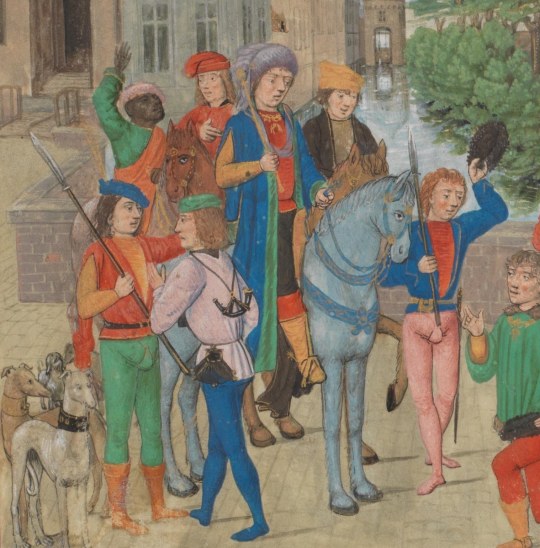

In Renaissance Era Europe was only increasing it's trade and therefore had even more connections outside Europe. The first picture below is Lisbon, which had strong trade relationship with Africa, depicted in late 16th century. People with darker skin tones were part all classes. Second image is an Italian portrait of probably a seamstress from 16th century. Third one is a portrait of one of the personal guards of the Holy Roman Emperor. Fourth image is a portrait of Alessandro de' Medici, duke of Florence, who was noted for his brown complexion, and the modern scholarly theory is that his mother was a (likely brown) Italian peasant woman.
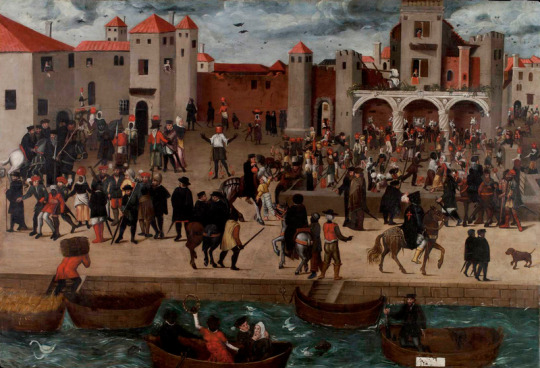

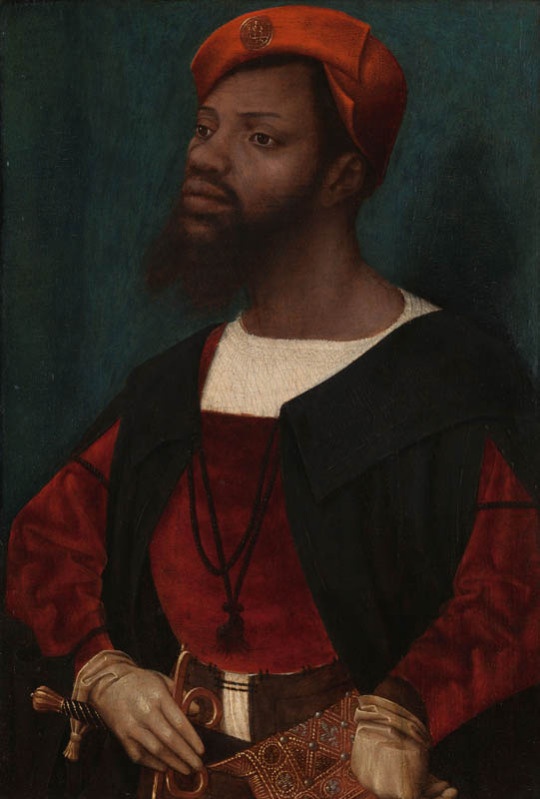

Colonialism begun in the Renaissance Era, but the wide spread colonial extraction and slavery really got going in the 17th century. Racial hierarchy was developed initially to justify the trans-Atlantic slave trade specifically. That's why the early racial essentialism was mostly focused on establishing differences between white Europeans and black Africans. Whiteness was the default, many theories believed humans were originally white and non-whites "degenerated" either through their lives (some believed dark skin was basically a tan or a desease and that everyone was born white) or through history. Originally white people included West-Asians, some Central-Asians, some North-Africans and even sometimes Indigenous Americans in addition to Europeans. The category of white inevitably shrank as more justifications for atrocities of the ever expanding colonial exploitation were required. The colonial exploitation facilitated development of capitalism and the industrial revolution, which led to extreme class inequality and worsening poverty in the European colonial powers. This eventually became an issue for the beneficiaries of colonialism as worker movements and socialism were suddenly very appealing to the working class.
So what did the ruling classes do? Shrink whiteness and give white working classes and middle classes justifications to oppress others. Jews and Roma people had long been common scapegoats and targets of oppression. Their oppression was updated to the modern era and racial categories were built for that purpose. The colonial powers had practiced in their own neighborhoods before starting their colonial projects in earnest and many of those European proto-colonies were developed to the modern colonial model and justified the same way. In 19th century, when racial pseudoscience was reaching it's peak, Slavs, others in Balkan, the Irish (more broadly Celts), Sámi (who had lost their white card very early), Finns, Southern Italians, the Spanish, the Southern French and Greeks all were considered at least not fully white. The Southern Europeans and many Slavs were not even colonized (at least in the modern sense, though with some cases like Greeks it's more complicated than that), but they looked too much and were culturally too similar to other non-white Mediterraneans, and they were generally quite poor. In many of these cases, like Italians, the French and Slavs, it was primarily others belonging in the same group, who were making them into second class citizens. All this is to highlight how very malleable the concept of race is and that it's not at all easy to define the race of historical people.
However, even if we would go with the racial categories of today, Europe was still far from being all white in this period. You had Roma, who certainly are not included in whiteness today, and European Jews, whose whiteness is very conditional, descendants of Moors in Southern Europe and Tatars and Turks in Eastern Europe and Turkey, which today is often not thought of as part of Europe, but historically certainly was. And then colonialism brought even more people into Europe forcibly, in search of work because their home was destroyed or for diplomatic and business reasons. There were then even more people of colour, but they were more segregated from the white society. Black slaves and servants are very much represented in European art from 17th century onward, but these were not the only roles non-white people in Europe were in, which I will use these examples to show. First is a Flemish portrait of Congo's Emissary, Dom Miguel de Castro, 1643. Second is a 1650 portrait of a Moorish Spanish man Juan de Pareja, who was enslaved by the artist as artisanal assistant, but was freed and became a successful artist himself. Third is a 1768 portrait of Ignatius Sancho, a British-African writer and abolitionist, who had escaped slavery as a 20-year-old. Fourth painting is from 1778 of Dido Elizabeth Belle, a British gentlewoman born to a slave mother who was recognized as a legitimate daughter by her father, and her cousin. The fifth portrait is of an unknown woman by (probably) a Swiss painter from late 18th century. Sixth is a 1760s Italian portrait of a young black man.

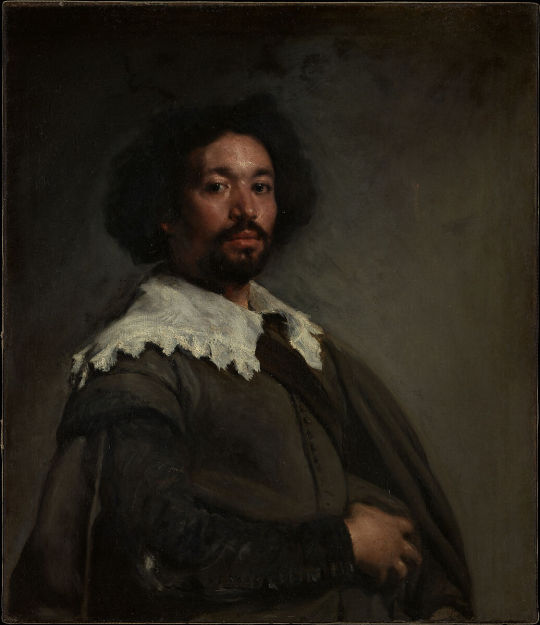
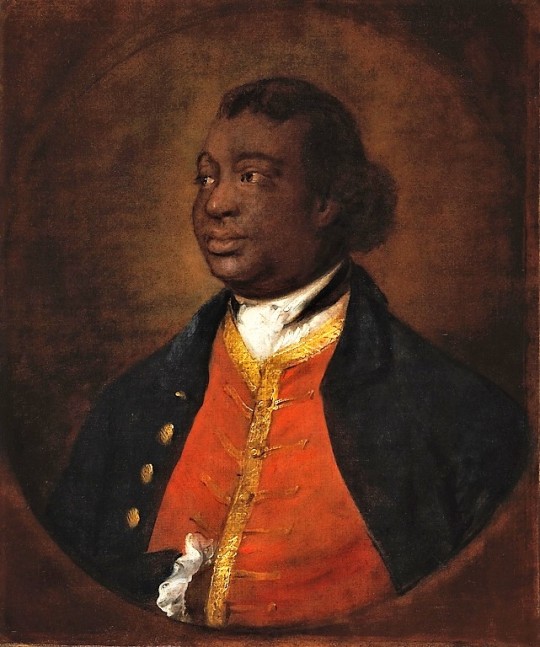
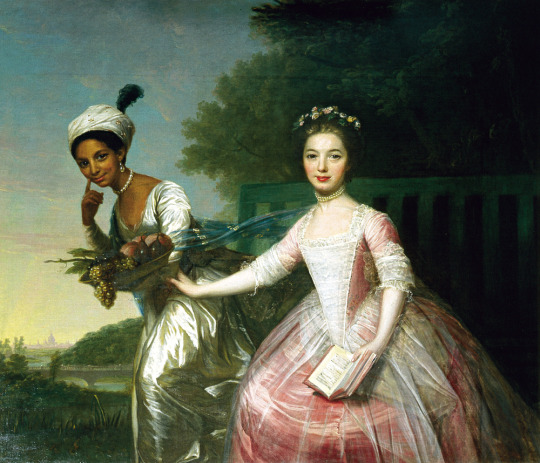
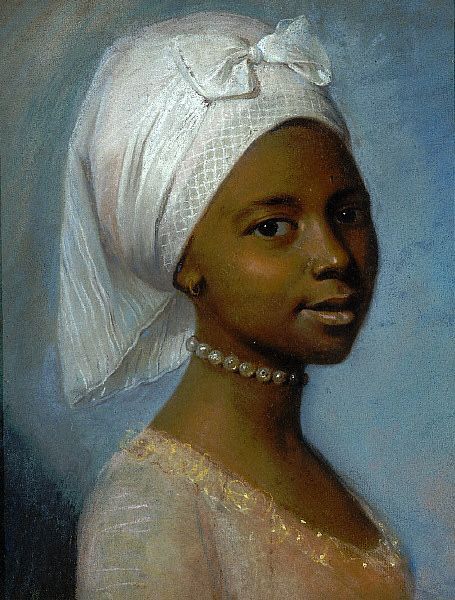
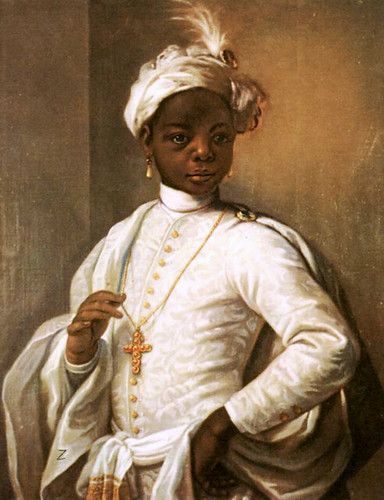
In late 18th century England abolished slavery in British Isles first, then in early 19th century in the whole British Empire, thanks to the continuous campaign of free Black people and some white allies, notably Quakers. Around the same time slavery was abolished in France (briefly till Napoleon got to power) after the French revolution. This meant there were a lot more free black people in Europe after that. In 18th century the Europeans, British especially, were colonizing Asia as much they could, which meant that in 19th century there started to also be a lot more Asian, especially Indian people in Europe. First picture below is of Thomas Alexander Dumas, who was son of a black slave woman and a white noble French man and became a general in the French revolutionary army. His son was one of the most well-known French authors, Alexander Dumas, who wrote The Count of Monte Cristo and The Three Musketeers. Second portrait is of Jean-Baptiste Belley, a Senegalese former slave, who became French revolutionary politician. Third portrait is from 1810 of Dean Mahomed, an Indian-British entrepreneur, who established the first Indian restaurant in London. Forth is Arab-Javanese Romantic painter Saleh Syarif Bustaman, who spend years in Europe. Fifth is a 1862 photo of Sara Forbes Bonnetta, originally named Aina, princess of Edbago clan of Yoruba, who was captured into slavery as a child, but later freed and made Queen Victoria's ward and goddaughter. She married a Nigerian businessman, naval officer and statesman, James Pinson Labulo Davies (sixth picture).
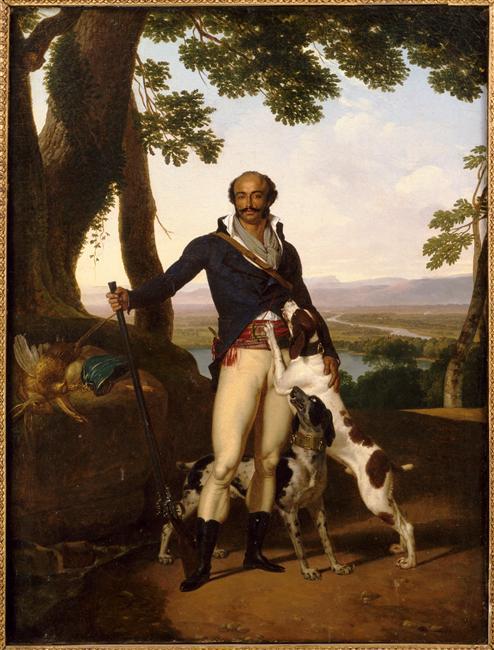


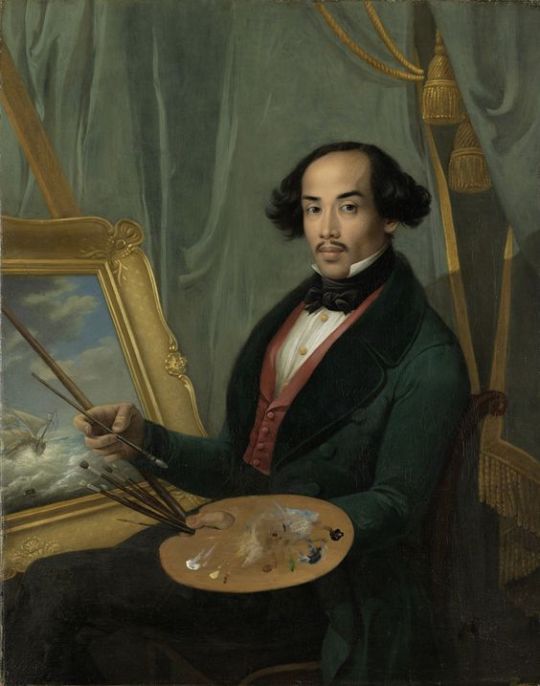
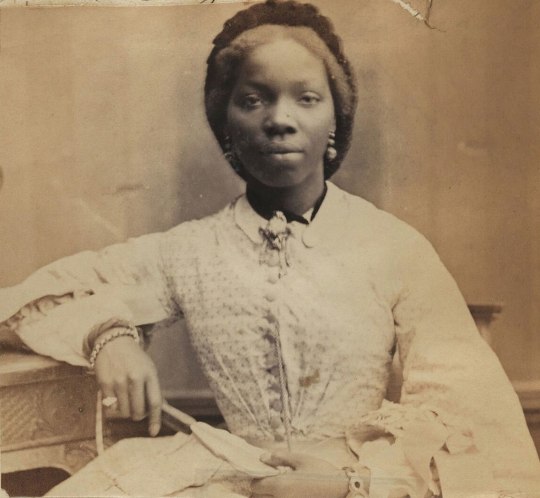
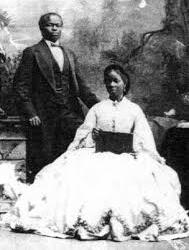
So any guesses on at what point was that "very white Europe" when the "west culture" begun? It kinda seems to me that it never actually existed.
#history#poc history#black history#historical art#european history#history of race#colonialism#racism#slavery#painting#photograph
174 notes
·
View notes
Text
PEOPLE FROM THE EU
On the coming European Parliament elections of this year please research the plans of every party and only vote for those that support Palestine.
The Proggressive Alliance of Socialists and Democrats is one of these.
IT IS EXTREMELY IMPORTANT TO MAKE SURE THAT THE PARLIAMENT SUPPORTS PALESTINE
Especially with the pro-Zionist Germany and France around, it is vital to apply pressure to the European parliament
#eu#free palestine#palestine#from the river to the sea palestine will be free#fuck israel#anti zionism#anti colonialism#european elections#icj#gaza#gazaunderattack#genocide#palestinian genocide
138 notes
·
View notes
Text
Genuinely confused as to how so much of the fandom watched the first 2 CR campaigns and Calamity and yet still ended up in a “Ludinus is right let’s kill all the gods” position. Like it’s baffling to me how much content/context people have just decided to completely forget? We had 2 full campaigns of very positive interactions with the gods and the moment there’s some hypothetical and interesting musing and speculation about their roles in the world from a more disconnected place we’re just throwing that out the window?*
Tbh the number of people who watched episode 4 of Calamity and still saw Asmodeus as sympathetic or having a legitimate point is unsettling to me, but while that’s a related issue it’s not quite the same conversation.
But like legitimately how did we so quickly make a hard turn from “The Stormlord teaches his barbarians to use the power of friendship, he’s a funny kindergarten teacher” memes to…this.
*(This is not, btw a comment on the characters having philosophical debates in-world because I think those are interesting and on-theme for the campaign and are also nearly always concluding with “our personal relationship to individual gods and feelings about them are irrelevant actually, the people trying to destroy them are doing wider harm and are in the wrong and must be stopped.” I’m actually loving the engagement with this by the characters in-universe but the fandom is exhausting me.)
#people stop engaging with all fantasy religion like it’s the same as bigoted evangelical American Christianity challenge#oh also the ‘the gods are colonial invaders’ take is also super weird to me because that’s applying recent human history to what is#basically standard like Greek or Roman creation myth?#like a ton of European pagan lore has a ‘the gods we worship came from afar and tamed the wilds of nature’ narrative#it is a metaphor#cr discourse#legit saw someone this morning confidently posting ‘well Ludinus just is right though!’ and I wanted to close down the whole internet#critical role
574 notes
·
View notes
Text
It’s #CapybaraAppreciationDay!
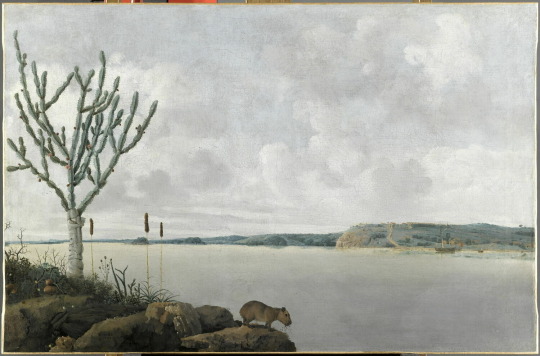
Frans Post (Dutch, 1612–1680)
View of the Rio São Francisco Brazil with Fort Maurits and a Capybara, 1639
oil on canvas
Musée du Louvre
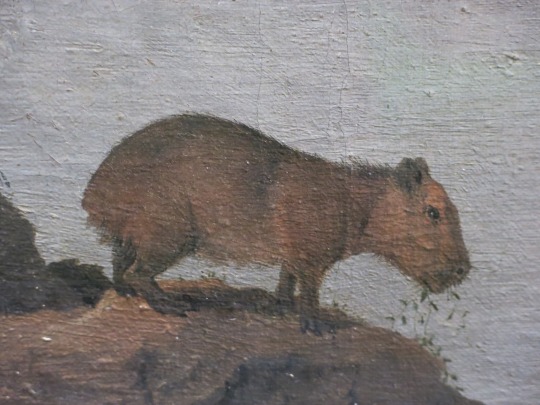
closeup of the capybara
#capybara#Capybara Appreciation Day#animal#holiday#animals in art#Dutch Brazil art#colonial art#Frans Post#17th century art#European art#landscape art#Musée du Louvre#painting#oil painting
353 notes
·
View notes
Text

I cannot think of a single valid reason why Israel should even be allowed to participate in Eurovision in any year much less this year...
#one: all of the genocide and settler-colonialism#two: russia was banned last year for attacking ukraine so why does the same rule not apply here#three: i thought they claimed they're 'native' to the levant so why are they competing in a european song contest???#eurovision#esc#esc 2024#anti israel#anti zionisim#free palestine#free gaza#boycott eurovision
58 notes
·
View notes
Text
I’m reflecting on cesaire’s work again and one of the little flourishes he does in discourse on colonialism is that he says the west will have to answer for its crimes against the human community. and I especially love this line because he’s using the same bourgeois universalising language that the imperial core so often does (“human rights” “freedom and justice for all” “spreading democracy across the globe”) but as a cudgel against the west, to reframe the human community as all those who lay outside of it. anyway I think everyone should read discourse on colonialism
#I need to brush up on my post colonial reading I’m not as well read as I’d like to be#once I finish my coursework I’ll have more time for reading shit I actually want to read lol#like I’m reading so much stupid bullshit that does not matter for class#genuinely useless theory that I will never pick up again#I want to finish orientalism in particular. one of the most didactic books I’ve ever read#like said’s writing is like every sentence restates his central argument. It’s an unrelenting book in a really compelling way#Interspersed with him talking fine grain shit about a bunch of European intellectuals I’ve never heard of lol#book club
168 notes
·
View notes
Text
Seeing fan discussions about Blue Eye Samurai and especially Mizu's identity is so annoying sometimes. So let me just talk about it real quick.
First off, I have to emphasise that different interpretations of the text are always important when discussing fiction. That's how the whole branch of literary studies came to be, and what literary criticism and analysis is all about: people would each have their own interpretation of what the text is saying, each person applying a different lens or theory through which to approach the text (ie. queer theory, feminist theory, reader response theory, postcolonial theory, etc) when analysing it. And while yes, you can just take everything the authors say as gospel, strictly doing so would leave little room for further analysis and subjective interpretation, and both of these are absolutely necessary when having any meaningful discussion about a piece of media.
With that being said, when discussing Blue Eye Samurai, and Mizu's character in particular, I always see people only ever interpret her through a queer lens. Because when discussing themes of identity, yes, a queer reading can definitely apply, and in Mizu's story, queer themes are definitely present. Mizu has to hide her body and do her best to pass in a cisheteronormative society; she presents as a man 99% of the time and is shown to be more comfortable in men's spaces (sword-fighting) than in female spaces (homemaking). Thus, there's nothing wrong with a queer reading at all. Hell, some queer theorists interpret Jo March from Little Women as transmasc and that's totally valid, because like all analyses, they are subjective and argumentative; you have the choice to agree with an interpretation or you can oppose it and form your own.
To that end, I know many are equally adamant that Mizu is strictly a woman, and that's also also a completely valid reading of the text, and aligns with the canon "Word of God", as the creators' intention was to make her a woman. And certainly, feminist themes in the show are undeniably present and greatly colour the narrative, and Episode 4 & 5 are the clearest demonstrations of this: Mizu's protectiveness of Madame Kaji and her girls, Mizu's trauma after killing Kinuyo, her line to Akemi about how little options women have in life, and the way her husband had scorned her for being more capable than him in battle.
I myself personally fall into the camp of Mizu leaning towards womanhood, so i tend to prefer to use she/her pronouns for her, though I don't think she's strictly a cis woman, so I do still interpret her under the non-binary umbrella. But that's besides my point.
My gripe here, and the thing that spurred me to write this post, is that rarely does this fandom even touch upon the more predominant themes of colonialism and postcolonial identities within the story. So it definitely irks me when people say that the show presenting Mizu being cishet is "boring." While it's completely fine to have your opinion and to want queer rep, a statement like that just feels dismissive of the rest of the representation that the show has to offer. And it's frustrating because I know why this is a prevalent sentiment; because fandom culture is usually very white, so of course a majority of the fandom places greater value on a queer narrative (that aligns only with Western ideas of queerness) over a postcolonial, non-Western narrative.
And that relates to how, I feel, people tend to forget, or perhaps just downplay, that the crux of Mizu's internal conflict and her struggle to survive is due to her being mixed-race.
Because while she can blend in rather seamlessly into male society by binding and dressing in men's clothing and lowering her voice and being the best goddamn swordsman there is, she cannot hide her blue eyes. Even with her glasses, you can still see the colour of her eyes from her side profile, and her glasses are constantly thrown off her face in battle. Her blue eyes are the central point to her marginalisation and Otherness within a hegemonic society. It's why everyone calls her ugly or a monster or a demon or deformed; just because she looks different. She is both white and Japanese but accepted in neither societies. Her deepest hatred of herself stems primarily from this hybridised and alienated identity. It's the whole reason why she's so intent on revenge and started learning the way of the sword in the first place; not to fit in better as a man, but to kill the white men who made her this way. These things are intrinsic to her character and to her arc.
Thus, to refuse to engage with these themes and dismiss the importance of how the representation of her racial Otherness speaks to themes of colonialism and racial oppression just feels tone-deaf to the show's message. Because even if Mizu is a cishet woman in canon, that doesn't make her story any less important, because while you as a white queer person living in the West may feel unrepresented, it is still giving a voice to the stories of people of colour, mixed-race folks, and the myriad of marginalised racial/ethnic/cultural groups in non-Western societies.
#blue eye samurai#mizu blue eye samurai#fandom critical#blue eye samurai meta#wank.mp3#shut up haydar#fandom.rtf#this is a bit of rant but the prevalent whiteness of fandom in general just gets on my nerves i'm sorry#giving me flashbacks to a:tla fandom fr cuz it's the same shit! people love to devalue the stories of non-white non-western identities#also to be clear i am a southeast asian living in southeast asia and similar to mizu i am often alienated for having mixed ethnic ancestry#and even for speaking english (bcs my granddad served the fuckin. british colonials. so my fam speaks mostly in english)#cuz where im from it's still extremely hegemonic racist patriarchal misogynistic homophobic like the setting in the show#so like even though the story is set in historical japan and may seem far-removed from the experiences of a US or european audience#those of us outside the west and in the global south still face a lot of the struggles that mizu goes through till this very day#so please dont just dismiss that. it feels incredibly tone-deaf#okay rant over
56 notes
·
View notes
Text
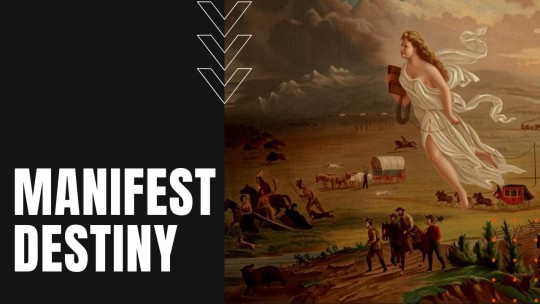
The term 'Sub-Saharan' Africa is a colonial language that was used to belittle African nations south of the Sahara and to separate the other countries from North Africa– Egypt, Morocco, Algeria, Tunisia, Libya, and Sudan due to them being Arab states.
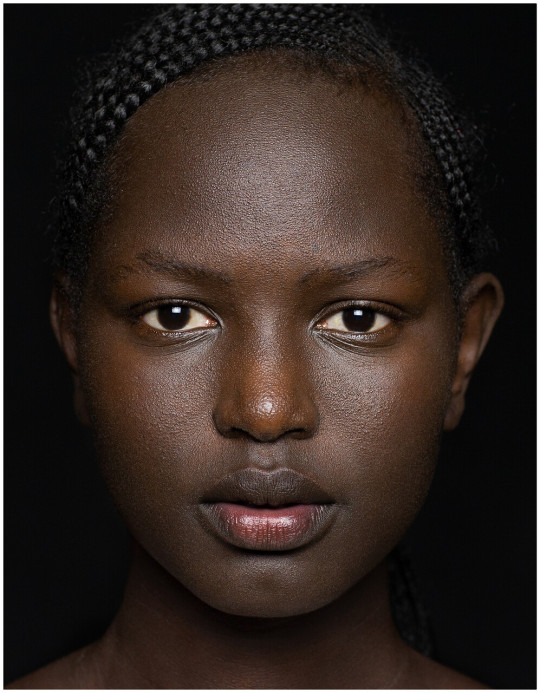



Colored, Negro, Black, Nigger
Every one of these terms come from the mindset of Europeans not Africans. Indigenous African societies do not use the term black as a racial identity outside of influences brought by Western cultures.
Contemporary anthropologists and other scientists, while recognizing the reality of biological variation between different human populations, regard the concept of a unified, distinguishable "Black race" as socially constructed.
Black is a term developed in the Colonial Assembly of Maryland, after a rebellion called Bacon's Rebellion, fought from 1676 to 1677.
The alliance between European indentured servants and Africans (a mix of indentured, enslaved, and Free Negroes) disturbed the colonial upper class. They responded by hardening the racial caste of slavery in an attempt to divide the two races from subsequent united uprisings with the passage of the Virginia Slave Codes of 1705.
White took on the meaning "British, Christian and having rights. Black meaning not having rights.
These divided the two populations, by giving poor Europeans with no power, unprecedented power over all non-Europeans.
The laws were devised to establish a greater level of control over the rising African slave population of Virginia. It also socially segregated white colonists from black enslaved persons, making them disparate groups and hindering their ability to unite. Unity of the commoners was a perceived fear of the Virginia aristocracy, who wished to prevent repeated events such as Bacon's Rebellion, occurring 29 years prior.
By refusing to call you an African, it belittles you, no such thing as black names, black land or black languages. It is like calling a woman big lips or flat butt and refusing to call the woman by her actual name. "Hey colored girl, or black boy".
In social psychology, a stereotype is a generalized belief about a particular category of people.
African populations have the highest levels of genetic variation among all humans.

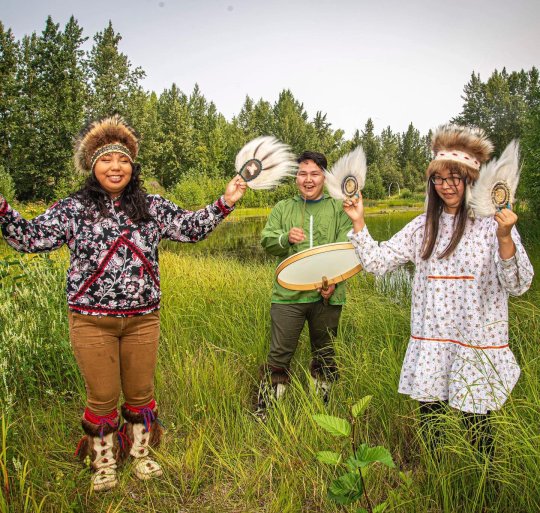
Why You Probably Shouldn't Say 'Eskimo'
People in many parts of the Arctic consider Eskimo a derogatory term because it was widely used by racist, non-native colonizers. Many people also thought it meant eater of raw meat, which connoted barbarism and violence. Although the word's exact etymology is unclear, mid-century anthropologists suggested that the word came from the Latin word excommunicati, meaning the excommunicated ones, because the native people of the Canadian Arctic were not Christian.
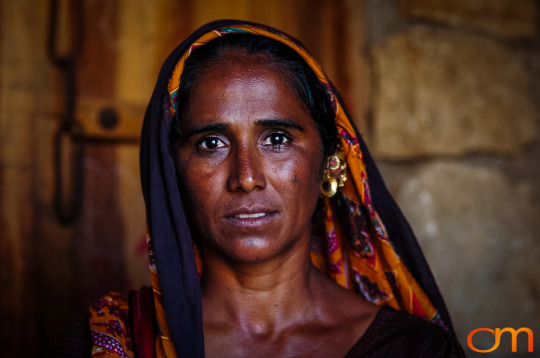
According to the Constitution of India, we are “the people of India that is Bharat”
In English language discourse, the word ‘India’ is used and in Hindi expressions, the word ‘Bharat’ is used. The Anglicised call it ‘India’, and the indigenous call it ‘Bharat’. Our ruling class calls it ‘India’, the others, the janata, call it ‘Bharat’. It has become a trend and fashion to prefer the word ‘India’ over ‘Bharat’. We converse with the country in Hindi and other vernaculars while we govern it in English.

Japanese people usually refer to their country as Nihon or Nippon
The name "Japan" in English is derived from the Portuguese word "Japão," which was used during the 16th century when Portuguese traders and explorers first arrived in Japan. The Portuguese term "Japão" likely evolved from the Malay word "Japang" or "Japang Pulau," which referred to the Japanese archipelago.
The Japanese people themselves refer to their country as "Nihon" (日本) or "Nippon" (日本), and these terms have been used in the Japanese language for centuries.

As European seen themselves as the elites of all races and god's chosen people. They took on the mindset of what I say makes the most sense.
Renaming essentially all populations they came in contact with, using their language as opposed to learning the language of the natives.
And whatever religion or spirituality people had Europeans demonized it and forced converted people to Christianity.
#african#afrakan#kemetic dreams#africans#brownskin#brown skin#afrakans#manifest destiny#colonization#colonialism#europeans#european#slavery#mindset#christianity#religion#spiritual#spirituality#asians#gujarat#gujarati people#india#bharat#nippon#nihon#english#eskimo#yupik#inuit#bacons rebellion
114 notes
·
View notes
Text
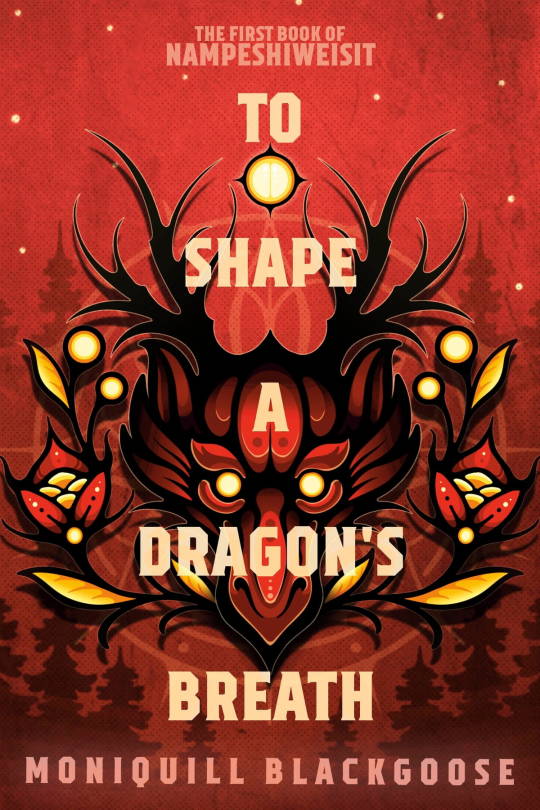
2023 reads // twitter thread
To Shape A Dragon’s Breath
YA fantasy
a young Indigenous girl finds & bonds with a dragon hatchling - the first time in many generations for her people - and is required to go to the coloniser’s dragon academy in their mainland city, to learn how to raise her dragon and the science of its magic
historical inspired setting on the cusp of industrial revolution with steampunk vibes
bi polyamorous MC, Black lesbian SC, nonverbal autistic SC
#To Shape A Dragon’s Breath#aroaessidhe 2023 reads#this is really really good i loved it!#the chapter titles are all like snippets of a story. or like sentence fragments that match up. which is cool#it is definitely more about being indigenous in a coloniser institution than Dragon School - not Super dragon heavy if you want that#I suspect the subsequent books will get into that when she gets big enough to ride and stuff#t’s also def YA! i’ve seen a few ppl assume it’s adult and be like its very young :( but like. I mean its perfectly reasonable for a 15yo m#definitely a Lot of racism and colonialism which is not fun to read! though it's still through a YA lens. there was def a part of me that#was imagining consequences of the narrative as if it were an adult novel#on that line of thought - at the end a lot of it is kind of solved by them going to the king and he's is like. oh no racism is happening?#that's bad i'll deal with those people! which felt like. a little simplistic. but maybe the easiest way to end the narrative for book 1 -#I don't think the author ACTUALLY is going to portray the king as a Good Guy throughout the series - it just felt conveniently like -#a simple YA solution to some very big and complex elements? if that makes sense? (but again - it is YA so it's allowed I suppose!)#some of the worldbuilding (like all the science learning) is probably setup for next books - we don’t really see any practical application#the romances are also subtle and not Overbearing In Book One which i like - leave some space for the series!#also her getting fanmail from a 10yo mixed race girl who looks up to her 🥺#anyway. i really loved it!#oh also it reminded me a little of leviathan. i guess just the steampunk/time period/european culture....#To Shape A Dragon's Breath
90 notes
·
View notes